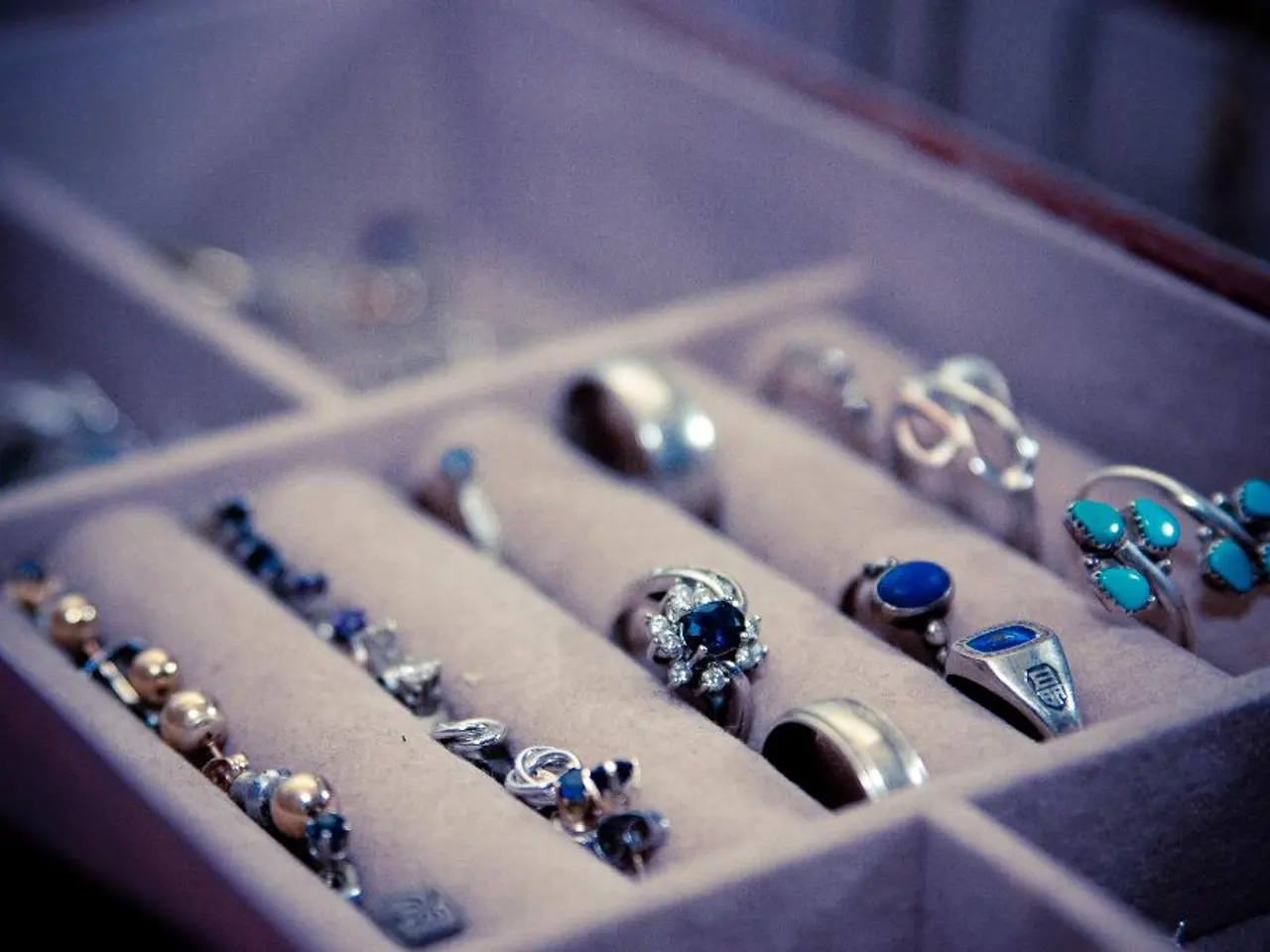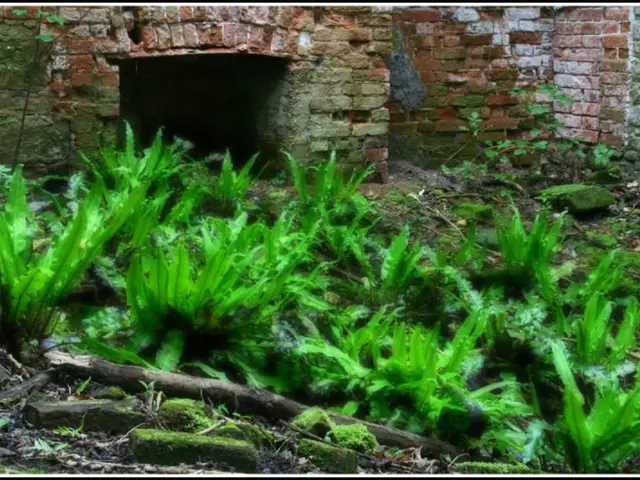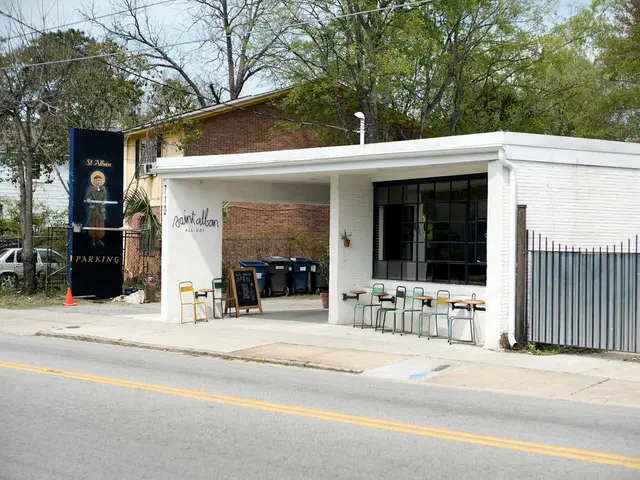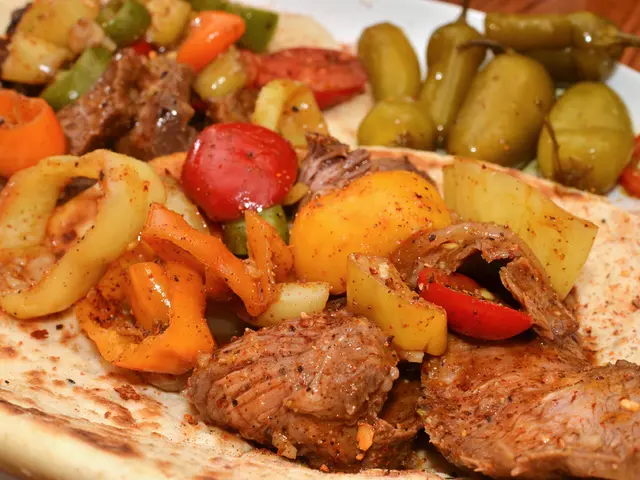An Overview of the Treasures Held within the Tower of London's Majestic Vaults
The Crown Jewels of the United Kingdom, housed in the Tower of London, are a testament to centuries of history, mythology, and legend. Each gem and crown carries its unique story, and here are some of the most notable components:
## Imperial State Crown
The Imperial State Crown, used at the annual State Opening of Parliament and after the coronation ceremony, is a central piece of the British Crown Jewels. First made for King George VI's coronation in 1937 and updated for Queen Elizabeth II in 1953 (and later adjusted for King Charles III), the crown draws on a long tradition of crowns used throughout British history. Adorned with numerous historic stones, including the Black Prince's Ruby, St Edward’s Sapphire, and several Cullinan diamonds, the Imperial State Crown symbolizes royal splendour.
## Black Prince's Ruby
The Black Prince's Ruby, a large red spinel, is a significant part of the Imperial State Crown. Its legend dates back to the 14th century when it was given to Edward of Woodstock, the Black Prince, by Pedro of Castile in gratitude for military support. The stone is said to have survived numerous battles, including Henry V wearing it in his helmet at the Battle of Agincourt. The "cursed ruby" legend suggests that blood will be shed over its possession, though there is no definitive evidence to support this. The Black Prince's Ruby has also been used in the battle helmet of Richard III during the Battle of Bosworth Field in 1485.
## St Edward’s Sapphire
St Edward’s Sapphire, a large blue sapphire set in the cross at the top of the Imperial State Crown, is believed to have once resided in the coronation ring of Edward the Confessor, England’s last Anglo-Saxon king before the Norman conquest. The sapphire is believed to date back to at least the 11th century and symbolizes continuity and the enduring nature of the British monarchy.
## Cullinan Diamond
The Cullinan Diamond, discovered in South Africa in 1905, is the largest gem-quality rough diamond ever found. Careful cleaving of the diamond resulted in nine major pieces and 96 offcuts. The largest, Cullinan I (also known as the Great Star of Africa), and Cullinan II (the Second Star of Africa) are set in the Sovereign’s Sceptre and the Imperial State Crown, respectively. The Cullinan stones represent Africa’s vast mineral wealth and are sometimes viewed in the context of colonial extraction, but they also symbolize royal splendour.
## Koh-i-Noor Diamond
The Koh-i-Noor Diamond, believed to have originated from the Golconda mines in India, is one of the most famous and controversial jewels in the world. Believed to have changed hands many times over the centuries, it was taken by the British East India Company during the annexation of Punjab in 1849 and presented to Queen Victoria. The Koh-i-Noor is steeped in myth and legend, and a longstanding legend claims that the diamond is cursed for male rulers. Indeed, since its acquisition by Britain, the Koh-i-Noor has only been worn by queens consort.
In conclusion, the Crown Jewels of the United Kingdom are not only symbols of royal power and authority but also rich repositories of history, legend, and controversy. From the Black Prince's Ruby, steeped in dark and bloody history, to the Koh-i-Noor Diamond, shrouded in myth and legend, each jewel tells a story that spans centuries.
- The Imperial State Crown, a symbol of royal splendor in the British Crown Jewels, features numerous historic stones like the Black Prince's Ruby, St Edward’s Sapphire, and several Cullinan diamonds.
- The Cullinan Diamond, discovered in South Africa, was said to represent Africa’s vast mineral wealth and is now part of the Sovereign’s Sceptre and the Imperial State Crown.
- The home-and-garden and lifestyle enthusiasts might appreciate gemmology workshops that teach the art of identifying and grading precious stones like the Black Prince’s Ruby, Cullinan Diamond, and the Koh-i-Noor Diamond.
- For those interested in the history and intrigue surrounding these renowned stones, membership in a gemmology association could provide access to courses on the stories, mythology, and legend surrounding the Crown Jewels, as well as its individual components like the Imperial State Crown, Black Prince’s Ruby, St Edward’s Sapphire, and the Koh-i-Noor Diamond.




